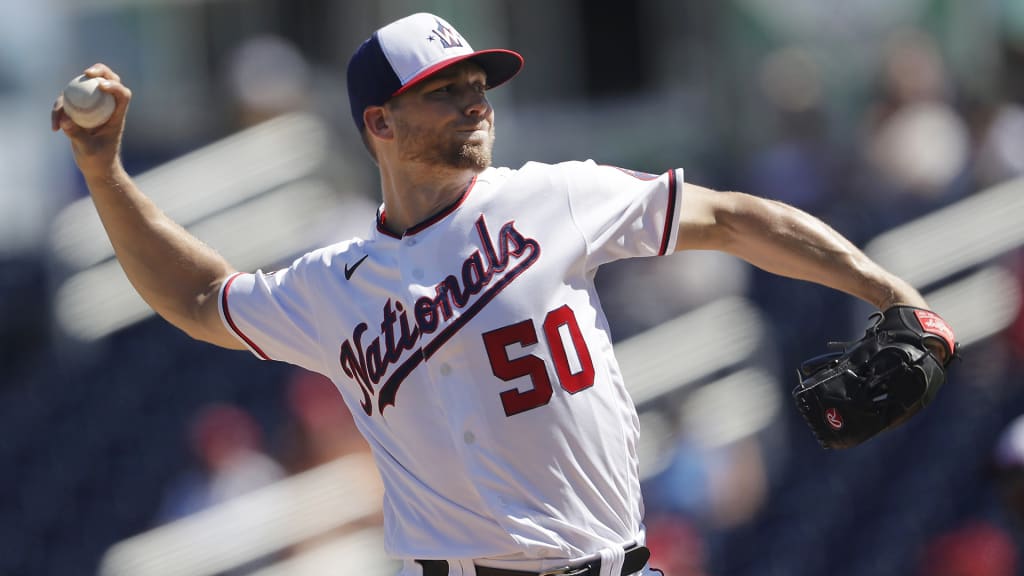
The Nationals' roster and projected lineup will look a lot different when Summer Camp opens on Friday from the last time the team was together in West Palm Beach, Fla., in March.
Joe Ross and Ryan Zimmerman elected not to play in 2020, marking the first season in Nationals history without the 15-year veteran infielder. A universal designated-hitter rule creates a new dynamic for the offense, and the team still is weighing its options on who will man first base.
Let's check in on these main storylines and see how they¡¯re impacting the Nats for the upcoming season.
1. Starting (four or five?) pitchers
Ross had emerged as the front-runner for the fifth-starting spot before he elected not to play on Monday. He posted a 0.00 ERA in his first two spring outings, and he made a strong case if Washington was to implement a traditional five-man rotation.
The Nationals, who carried 36 pitchers on their original 60-man player pool, could go in a few different directions following Ross¡¯ decision.
Ross was competing for starting duties with fellow right-handers Erick Fedde and Austin Voth. The Nats could alternate between the two, or add a third pitcher into the mix -- from within the organization or another team. Voth concluded Spring Training with a 1.29 ERA, while Fedde posted a 2.45 ERA. Following spring action, Fedde was optioned to Triple-A Fresno. Of the trio, he had an option remaining on his contract.
The team also could narrow down its rotation to four starting pitchers -- Max Scherzer, Stephen Strasburg, Patrick Corbin and An¨ªbal S¨¢nchez. That would create the opportunity to utilize Voth and Fedde out of the bullpen, but it also would add to the workload of a pitching staff that threw 153 innings last postseason.
2. Who¡¯s on third?
The Nationals gave Carter Kieboom the opportunity to earn the starting third-base job -- which was vacated when Anthony Rendon signed with the Angels in free agency -- for the 2020 season. Kieboom, who previously played 10 Major League games at shortstop, worked this past offseason on transitioning to third base. He got his first taste of playing the hot corner in Florida, where he was introduced to live-action speed and vantage points.
¡°There¡¯s a game, and then there¡¯s practice,¡± Kieboom noted in February.
Kieboom will have to make adjustments at the big league level. He has 14 games of Spring Training experience to learn from as he heads into Summer Camp. If the Nats do not believe Kieboom is ready for the starting job, veteran Asdr¨²bal Cabrera -- who has been mentoring Kieboom -- can fill the role. Cabrera has played 165 games at third in his career, posting a .965 fielding percentage.
3. Options for the closer role
Late-inning arms will be a hot commodity if games are played at a more frequent pace in a condensed schedule -- not to mention doubleheaders. The Nats bulked up the back end of their bullpen over the offseason by re-signing right-hander Daniel Hudson and adding righty Will Harris in free agency to join southpaw Sean Doolittle. The trio has 26 years of Major League experience combined.
Doolittle is coming off a 2019 season in which he led all National League pitchers in games finished (55). He allowed just two runs in 10 1/3 innings of playoff baseball during Washington¡¯s title run. Doolittle is in the final year of his contract.
Hudson already has proved he can close on the biggest of stages, recording the final outs in Game 7 of the World Series. Yet there¡¯s no lack of motivation heading into this season. During Spring Training, Hudson expressed one of his goals for 2020 is ¡°showing that what I did last year wasn¡¯t a fluke.¡±
Harris joined the Nationals after playing the role of World Series opponent. Last season, he led all American League relievers with a 1.50 ERA as a member of the Astros. Harris was sidelined during Spring Training with a left abdomen injury, and he has been working out in preparation for his debut with the Nats.
4. Plethora of DH possibilities
The Nationals didn¡¯t enter Spring Training needing an everyday designated hitter, but a new universal rule has made it part of their Summer Camp checklist. When the DH rule was released, it was easy to look at the roster and spot multiple options. (Zimmerman had been a candidate before electing not to play this season.) The organization constructed the team for defensive versatility, creating scenarios in which a player who may be on backup duty any given game could step up to the plate:
? The standout candidate is Howie Kendrick. The 2019 playoff hero slashed .344/.395/.572 with 17 homers and 62 RBIs over 370 plate appearances last year. He also ranked second on the team with a .966 OPS.
? Fellow first baseman Eric Thames hit .247/.346/.505 with 25 homers and 61 RBIs in 459 plate appearances from the left side of the plate for the Brewers in '19.
? Cabrera, a switch-hitting infielder who hit .323/.404/.565 with six home runs and 40 RBIs in 146 plate appearances after joining the Nats last August, could fill in at DH if Kieboom starts at third.
? In addition to veteran options, left-handed outfielder Andrew Stevenson has been used as a pinch-hitter in his three-year career. Last season, he batted .367/.486/.467 in 37 plate appearances for the Nationals.
5. What¡¯s next for Soto?
Speaking of hitters, 21-year-old Juan Soto is poised to carry the momentum of his breakout sophomore season. The left fielder capped off last year with three homers and seven RBIs in the Fall Classic, making him the youngest player in Major League history to belt a trio of home runs in the World Series.
Soto entered Spring Training eager to continue improving. In 12 games, he hit .280/.471/.640 with a 1.111 OPS, two home runs, seven RBIs and two stolen bases. His first long ball flew 387 feet to the opposite field.
¡°I¡¯m going to fight for my place,¡± Soto said in February. ¡°I¡¯m going to keep working hard, keep playing baseball the right way because it¡¯s a lot of new players, a lot of new outfielders and you don¡¯t want to get comfortable on this team.¡±

